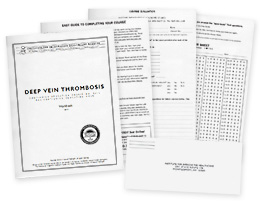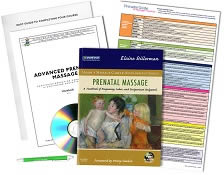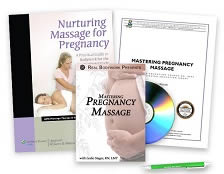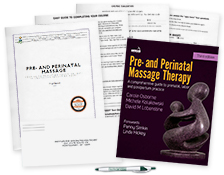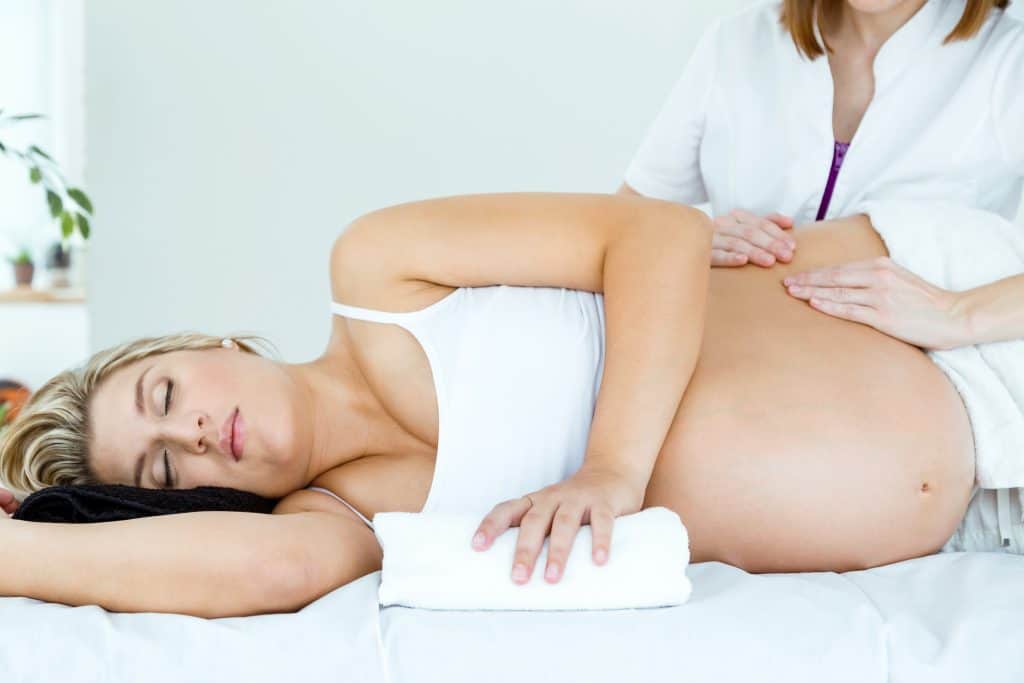

 Want to earn continuing education credit for this article? Learn more.
Want to earn continuing education credit for this article? Learn more.
Its ability to improve many aspects of physical and emotional health makes the benefits of massage therapy extremely far-reaching. Because of the structural, physical, psychological, spiritual, and social changes that occur during pregnancy, massage is especially valuable to women during pregnancy. However, massage therapy is commonly denied to those who could benefit most from bodywork – women with high-risk pregnancies. By learning more about expectant mothers in this category, bodyworkers can distinguish between pregnancies requiring additional care and situations that carry too great a risk for bodywork.
Defining High-Risk Pregnancy
According to the respected physician’s reference, the Merck Manual, there is no formal or universally accepted definition of a “high-risk pregnancy.” However, most experts agree that a high-risk pregnancy involves at least one of the following:
- The woman or baby more likely to become ill or die than usual.
- Complications before or after delivery are more likely to occur than usual.
Certain conditions or characteristics qualify a pregnancy as high risk. Approximately 5 to 10 percent of all pregnancies in the U.S. fit into a high-risk category. Although not a comprehensive list, the most common culprits for placing a pregnant woman in a high-risk category include:
- Age – A mother under age 17 or over age 35
- Diabetes – Having diabetes before pregnancy or developing it during pregnancy (gestational diabetes)
- Pre-eclampsia – A syndrome that includes high blood pressure, urinary protein, and changes in liver enzymes during pregnancy that can affect the mother’s kidneys, liver and brain
- Multiple Pregnancy – Carrying more than one child at once increases the stress on the mother’s body
- Other Pre-existing Health Conditions – Asthma, high blood pressure, cancer and heart, kidney, lung, or liver disease
Massage for High-Risk Pregnancy
The benefits of prenatal massage are proven. For example, in a 1999 study published in the Journal of Psychosomatic Obstetrics and Gynecology, prenatal massage decreased anxiety and stress hormones, resulting in fewer obstetric and postnatal complications, including lower pre-maturity rates. Also, the Journal of Clinical Medicine published a review of randomized controlled trials in 2021 whereby the authors concluded:
“Massages during pregnancy have been shown to reduce symptoms of depression and anxiety, attenuate leg and back pain, reduce cortisol levels, and show positive effects on immune function. Massage treatments show more positive effects than other relaxation techniques like progressive muscle relaxation. Effects on prenatal depression are comparable to psychotherapy and antidepressants.”
Prenatal care for women with a high-risk pregnancy typically involves extensive testing, more frequent prenatal visits, medications, and bed rest. Unfortunately, the stress of worrying about one’s health or the fetus’s viability only magnifies whatever problem exists. In addition, the reason a woman is in a high-risk category typically adds additional challenges to the expectant mother’s body. Thus, massage therapy can be even more therapeutic for high-risk pregnancies.
Seven reasons massage helps during pregnancy include:
- Reduces stress, encourage healthful sleep, and promote relaxation – especially needed during a high-risk pregnancy
- Provides emotional support and physical nurturing – especially for those alone during their pregnancy or who feel scared because of their risk status
- Reduces or alleviates neck, back, and joint pain caused by posture, muscle weakness, tension, extra weight, or imbalance – especially needed in women over age 35 who are obese or who are carrying multiple fetuses
- Relieves muscle spasms, cramps, and fibrosis, which several pregnancy risk factors can intensify
- Reduces blood pressure through relaxation. This is especially helpful to a woman with pre-eclampsia.
- Increases blood and lymph circulation which minimizes the edema, varicose veins and leg cramps common with pregnancy
- Encourages deep breathing – especially important for women with asthma or lung problems.
Caution or Contraindication?
Because complications, illness, or death are more likely to occur in high-risk pregnancies, any healthcare provider must proceed cautiously. For the safety of the client and the massage practitioner, any high-risk pregnancy necessitates communication with the woman’s prenatal healthcare provider and a signed release form. This release form should contain at least two components:
- Confirmation that the prenatal healthcare provider (physician, ob-gyn, or midwife) approves massage therapy
- A listing of any precautions or limitations of massage procedures
When working with a high-risk pregnant client, observing basic precautions and contraindications for bodywork in pregnancy is crucial. Restrictions and considerations for pregnant clients may include:
- Positioning for a Massage Session – the side lying position is often advised for pregnant women.
- Modifications for Bodywork on the Lower Extremities – Because blood clots are more likely to develop during pregnancy, deep pressure or friction should be avoided on the legs. In addition, all leg techniques should go in the direction of the heart since hormonal changes in pregnancy weaken the vein’s valves.
- Abdominal Massage – Since 80 percent of miscarriages occur in the first trimester, abdominal massage should be avoided entirely during that period. In addition, therapists are advised to minimize abdominal massage to high-risk pregnancy clients, even in their second and third trimesters.
- Acupressure Points – With high-risk clients, avoiding acupressure points contraindicated in pregnancy is even more necessary.
- Heart Condition – In general, massage therapy techniques that encourage circulation should be avoided in the third trimester for clients with a heart condition.
Despite a therapist’s best efforts, there are several situations where a cautious approach and a signed release form are insufficient. In addition to massage therapy being contraindicated, an immediate healthcare referral is mandated for:
- Possible Miscarriage – Signs include a bloody discharge, continual abdominal pains and sudden gush of water or leakage of amniotic fluid
- Urinary Tract Infection – Signs include frequent urination with burning, low back pain, increase in thirst, chills, and fever
- Eclampsia (Toxemia) – This is an emergency! 1 out of 200 pregnant women develops pre-eclampsia. Symptoms include persistent severe headaches, persistent severe back pain unrelieved by change of position, severe nausea/vomiting, systemic edema, pitting edema, increased blood pressure, visual disturbances, and convulsions
If massage therapists don’t allow the possible dangers of a high-risk pregnancy to frighten them, working with this population fulfills an enormous need for specialized prenatal care. By communicating with prenatal care providers, obtaining release forms, and being aware of the difference between massage cautions and contraindications, bodyworkers can be a resource for expecting mothers.
Earn continuing education credit for this article contained in our Prenatal & Pediatric Massage series. Click here to enroll.

